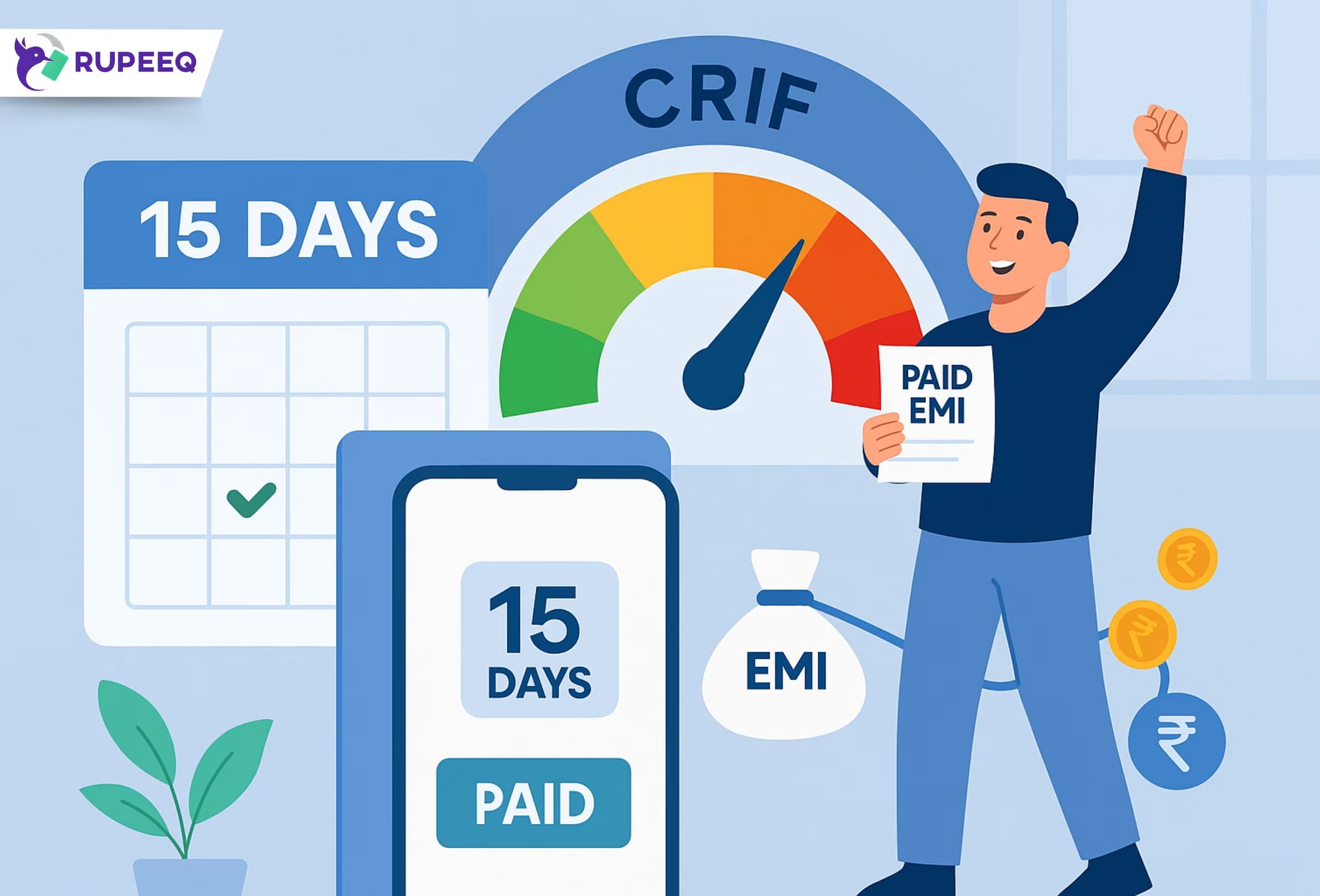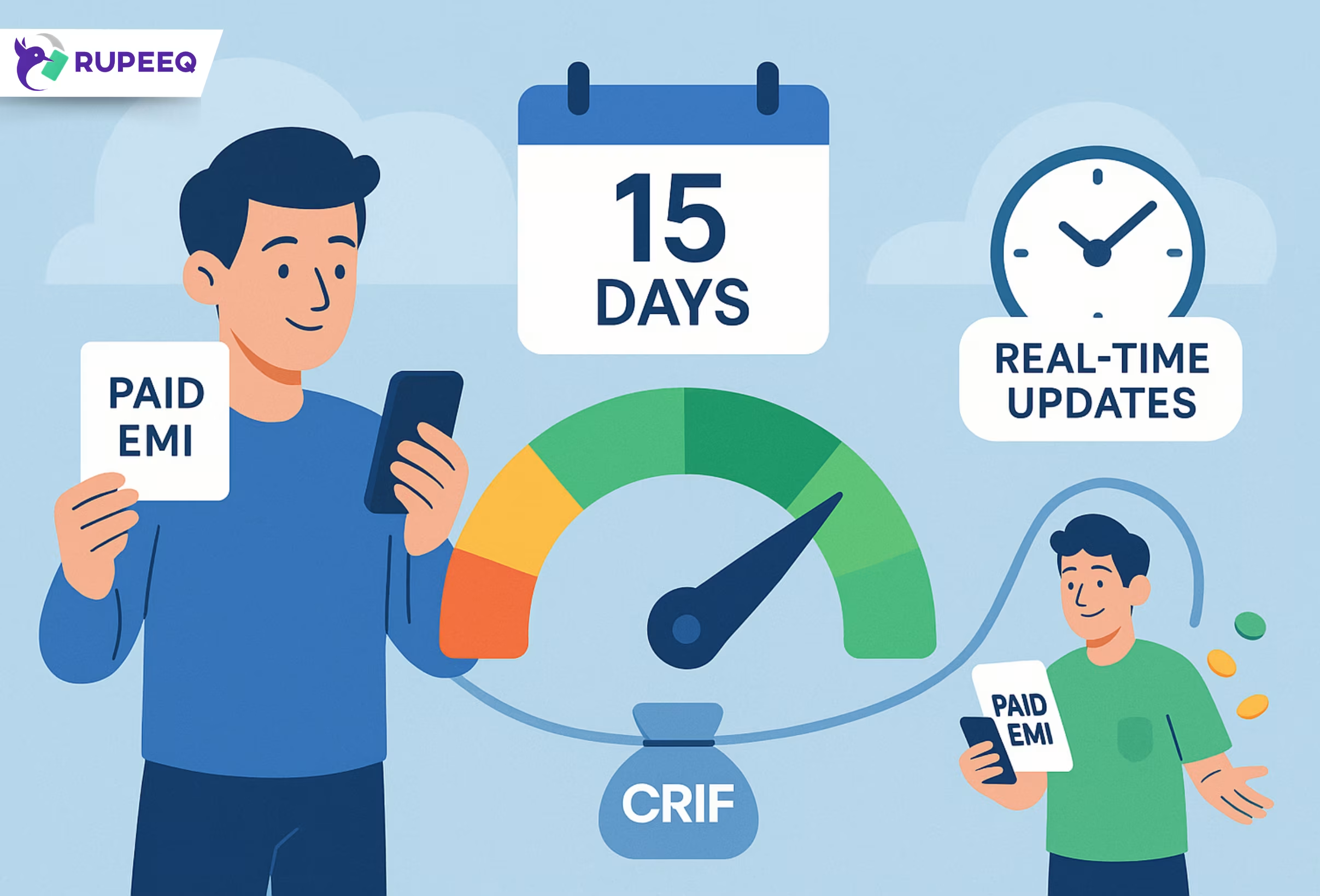When you pay your loan EMI on time, the first thing you hope to see is a positive reflection in your credit report. Your CRIF score—like other bureau scores—is affected by your payment behavior. But most people don’t know when that payment actually gets recorded in the credit bureau system. With the new guidelines from the Reserve Bank of India (RBI), this timing has changed for the better.
In this blog, we’ll explain how soon your EMI payment reflects in your CRIF report, why this timeline matters, and what steps you can take if your CRIF report doesn’t update as expected.
Understanding CRIF Score Reporting Cycle
Your CRIF credit score is updated based on information submitted by banks and NBFCs. This data includes your loan repayments, missed EMIs, credit card dues, and other loan activity.
Previously, lenders updated this data once a month, which meant your timely EMI could take 30 days or more to show up. However, under new RBI guidelines that came into effect on January 1, 2025, the reporting frequency has doubled.
RBI's New 15-Day Reporting Mandate The RBI has mandated that lenders must now update borrower data with credit bureaus like CRIF every 15 days instead of once a month. This means:
-
Your EMI payment will now reflect in your CRIF report within 15 days of payment (if reported accurately by the lender).
-
If you miss an EMI, the delay may also reflect faster, potentially lowering your score sooner than before.
Impact: Faster updates mean better control over your credit profile—especially if you’re planning to apply for a loan soon.
Timeline of EMI Reflection in CRIF Report
Here’s how the new timeline works under RBI’s 15-day cycle:
| Event | Day | Activity |
| EMI Payment Made | Day 0 | You pay your EMI via auto-debit, UPI, or cheque |
| Lender Updates Record | By Day 7–10 | Bank prepares data for submission to CRIF |
| CRIF Receives and Updates | By Day 15 | CRIF updates your report with payment status |
Total Turnaround Time: 7–15 days depending on the lender’s internal process.
Why Faster Updates Matter for Borrowers
A 15-day update cycle gives you a more real-time picture of your credit standing. This is especially beneficial in the following situations:
1. Planning a Loan Application
If you’ve cleared dues recently to improve your CRIF score, the faster update cycle helps lenders see your latest repayment behavior before approving new credit.
2. Fixing Past Defaults
Paying off old EMIs or settling a loan can now positively impact your CRIF score in less than a month—accelerating loan eligibility.
3. Spotting Errors or Delays
If your EMI still doesn’t reflect after 15 days, you can raise a red flag faster. Earlier, you had to wait a month just to notice a delay.
RupeeQ Tip: Always download and check your latest CRIF report 15–20 days after an EMI payment, especially if you’re applying for a new loan soon.
What If Your EMI Doesn’t Reflect on Time?
Even under the 15-day rule, there can be delays. Here’s what might cause them:
- Bank Delay: Your lender may batch update EMI data towards the end of the 15-day window.
- Payment Date Near Window Close: If your EMI was paid on the 14th or 15th day, it might reflect in the next cycle.
- Technical Errors: Sometimes, data mismatches or backend glitches can delay updates.
What to Do:
- Wait for 5 more working days if the 15-day mark has just passed.
- Then, raise a dispute with CRIF directly.
How to Check If Your EMI is Updated in CRIF Report
Follow these steps to confirm whether your latest EMI has been recorded in your CRIF report:
- Visit RupeeQ’s Free Credit Score Check page
- Complete basic KYC to fetch your CRIF score and report
- Look under the “Accounts” or “Loan Summary” section
- Match the Last Payment Date with your actual EMI payment
- Check if the DPD (Days Past Due) is shown as “000” – which means “no delay”
Note: If the payment status shows as overdue even after timely payment, raise a dispute.
CRIF Reporting vs. Other Credit Bureaus
While all major credit bureaus—like CIBIL, Experian, and Equifax—follow the RBI’s 15-day rule, the internal processing speed of CRIF is known to be faster in updating settled accounts and small loan repayments.
This makes it an effective credit monitoring tool, especially for salaried borrowers using platforms like RupeeQ.
Best Practices to Ensure Timely CRIF Updates
To keep your CRIF report clean and updated, follow these habits:
- Always Pay Before Due Date: Don’t wait until the last hour. Give banks time to register your payment.
- Use Auto-Debit or UPI: These modes reflect faster than cheque-based payments.
- Avoid Skipping EMIs: A missed payment now gets reported faster—hurting your score within weeks.
- Check Your Report Monthly: Especially after clearing old dues or closing loans.
- Save Payment Proofs: In case of disputes, your transaction receipts can speed up resolution.
RupeeQ Tip: If your lender doesn’t report accurately, RupeeQ can help you raise a dispute with CRIF through its credit health tracking tools.
Final Thoughts
The RBI’s 15-day credit reporting rule is a welcome change that brings more transparency and efficiency to how CRIF reports work. For borrowers who are managing EMIs responsibly, this means your efforts will show up in your credit score faster than before. But it also means you need to stay alert and proactive—because missed payments will now reflect just as quickly.
Check your CRIF report regularly on RupeeQ to stay informed about where your credit score stands and take timely actions to maintain a healthy credit profile.







